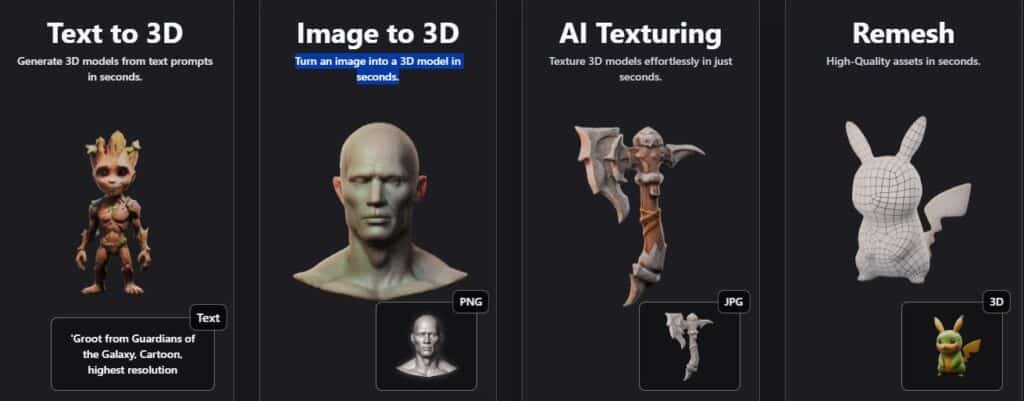Why Being Able to Convert Images to 3D Models is Important
Imagine this: you’ve snapped an awe-inspiring photo of a scene or an object, and now you wish to bring it to life in three dimensions. Sounds like sci-fi?
Not anymore. Converting images to 3D models is not only possible but also increasingly essential across various fields.
From gaming and entertainment to healthcare and engineering, the ability to transform 2D visuals into 3D masterpieces is revolutionizing how we interact with the world.
Let’s dive into why converting images to 3D models is important.
Why Is This Important?
Here are some of the importance of the ability to convert image to 3D model.
1. Enhanced Realism in Gaming and Entertainment
Let’s start with something fun. Picture playing your favorite video game where characters and environments are so lifelike that you’re almost convinced you’ve stepped into another reality.
Converting 2D images to 3D models allows game developers to create rich, immersive experiences that captivate players like never before.
The same principle applies to movies and virtual reality experiences. When 3D models are crafted from real-world images, the authenticity and detail can be mind-blowing.
2. Revolutionizing the Healthcare Industry
Who would have thought that creating 3D models from images could save lives? But that’s precisely what’s happening in healthcare.
Doctors can convert medical scans (like MRIs and CT scans) into 3D models, providing a more comprehensive view of a patient’s anatomy.
This detailed perspective aids in diagnosing, planning surgeries, and even simulating complex procedures.
Imagine a surgeon rehearsing a delicate operation on a 3D model before making the first incision—talk about practice making perfect!
3. Engineering and Manufacturing Precision
Engineers are typically precise people. They have to be; otherwise, buildings would fall, and planes wouldn’t fly.
Converting images to 3D models offers engineers and manufacturers an invaluable tool for prototyping, design verification, and quality control. Suppose you’re designing a part for a new machine.
By converting your 2D schematics to a 3D model, you can examine every nook and cranny, ensuring everything fits perfectly before committing to production. It’s like having a crystal ball, but for nerds.
4. E-commerce and Product Visualization
Have you ever hesitated to buy something online because you couldn’t get a good sense of its size, shape, or texture from the photos?
Converting product images to 3D models solves this problem. Consumers can interact with 3D models, rotating them, zooming in, and viewing them from every angle.
This interaction builds confidence in purchasing decisions and reduces return rates. For businesses, it’s a win-win situation: happier customers and fewer logistical headaches.
The Technical Side: How It All Works
For those curious about the nuts and bolts, here’s a simplified breakdown of how images are converted to 3D models:
- Image Capture: Multiple images are taken from different angles to cover all perspectives.
- Feature Detection: Software identifies key points and features in each image.
- Matching Points: The software matches these points across multiple images to understand depth and spatial relationships.
- Mesh Generation: A mesh is created, connecting these points to form a 3D shape.
- Texturing: The mesh is textured with the original images to give it a realistic appearance.
- Refinement: The model is fine-tuned for accuracy and detail.
The Future is 3D
From gaming to healthcare, the ability to convert images to 3D models is reshaping industries and enhancing our interaction with the digital world.
It’s a blend of art and science that opens up endless possibilities. So, the next time you take a picture, think about the potential it holds. You never know; it might just be the first step towards creating your very own 3D masterpiece.
Remember, the journey from 2D to 3D is not just about adding an extra dimension; it’s about expanding the horizons of creativity, innovation, and practicality.
Now go ahead, capture those images, and start exploring the magical world of 3D modeling. The future is waiting, and it’s beautifully three-dimensional.


























